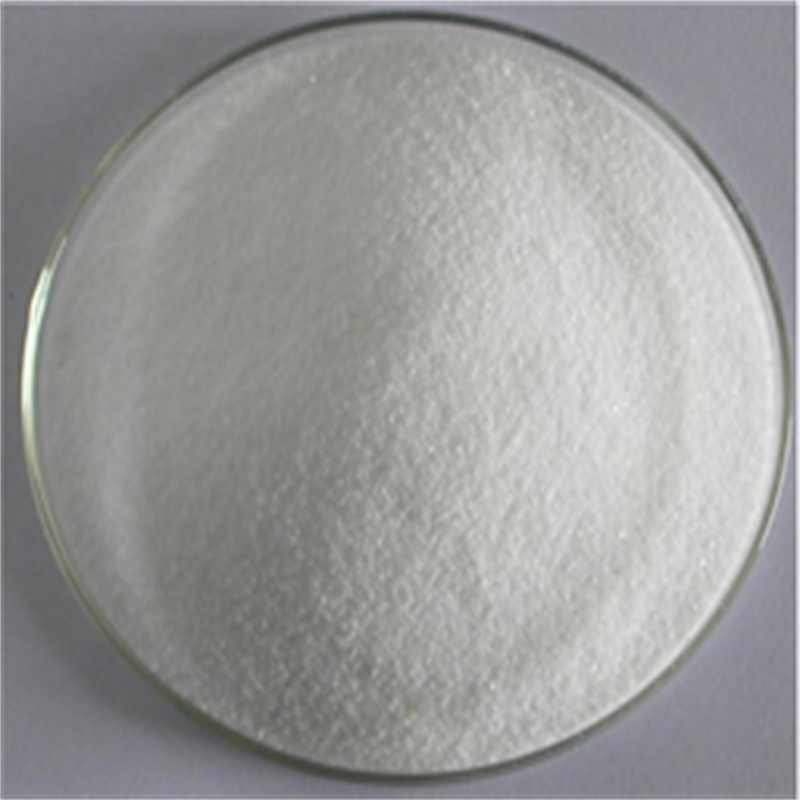-
Categories
-
Pharmaceutical Intermediates
-
Active Pharmaceutical Ingredients
-
Food Additives
- Industrial Coatings
- Agrochemicals
- Dyes and Pigments
- Surfactant
- Flavors and Fragrances
- Chemical Reagents
- Catalyst and Auxiliary
- Natural Products
- Inorganic Chemistry
-
Organic Chemistry
-
Biochemical Engineering
- Analytical Chemistry
-
Cosmetic Ingredient
- Water Treatment Chemical
-
Pharmaceutical Intermediates
Promotion
ECHEMI Mall
Wholesale
Weekly Price
Exhibition
News
-
Trade Service
Pheochromocytoma patient, female, 49 years old
.
The medical history was recurrent headaches, excessive sweating, and severe high blood pressure
.
Physical examination revealed an abnormally elevated blood pressure of 220/140 mmHg and a heart rate of 108 beats/min
.
Apart from occasional anxiety, the patient denies any disease
.
Further workup was done to find out the cause of this patient's hypertension and headache
.
C Intraoperative management 1.
Which drugs should be avoided during surgery? 2.
How to monitor patients? 3.
Describe the appropriate anesthesia protocol for this patient
.
4.
What methods are there to control the effects of catecholamine stimulation during surgery? 5.
After the tissue is removed, what issues need to be dealt with? 6.
If pheochromocytoma is complicated with pregnancy, can magnesium sulfate play a role in controlling hypertension? 7.
What should be paid attention to in patients undergoing laparoscopic adrenalectomy? D Postoperative Management 1.
What is the significance of postoperative hypotension? How to treat? 2.
What problems may occur after surgery? ★Partly explain C.
Intraoperative treatment Cl.
Which drugs should be avoided during operation? Atropine augments the long-term effects of epinephrine by inhibiting the vagus nerve
.
Histamine can stimulate pheochromocytoma, so all drugs that cause histamine release (eg, morphine, curare, atracurium) should be avoided
.
Drugs that indirectly increase catecholamine levels (eg, pancuronium, ketamine, ephedrine) should also be avoided
.
C2.
How to monitor patients? ECG, body temperature, pulse oximetry, invasive arterial blood pressure, central venous pressure, and urine output
.
A pulmonary artery catheter may be considered in patients with known or suspected cardiac insufficiency
.
The use of non-invasive techniques to assess cardiac function may also be considered
.
C3.
Describe the appropriate anesthesia protocol for this patient
.
General anesthesia, regional anesthesia, or a combination of both can be used alone
.
Regardless of the method of anesthesia used, it is important to avoid dramatic fluctuations in blood pressure
.
In general anesthesia, lidocaine 1.
5 mg/kg intravenously administered 2 minutes before laryngoscope insertion can weaken the intubation response
.
Most inhalation anesthetics can be used to maintain general anesthesia, the most commonly used is isoflurane
.
Halothane increases the incidence of arrhythmias and should be avoided
.
Recently, there have been data showing the safety of desflurane
.
Although desflurane may stimulate the sympathetic nerves, the application of desflurane in well-prepared patients can effectively control the onset of hypertension
.
C4.
What methods can be used to control the effects of catecholamine stimulation during surgery? Phentolamine is a short-acting alpha-blocker that can be used to control blood pressure by continuous infusion
.
The combination of phentolamine and isoflurane can maintain moderate blood pressure
.
Sodium nitroprusside (0.
01% solution) is the most commonly used drug to control hypertension during pheochromocytoma surgery
.
Routes of drug administration for controlling hypertension: Diltiazem intravenous loading dose of 5-10 mg is given in a single dose, followed by continuous infusion of 0.
25-0.
5ug/(kg·min) esmolol intravenously in a single dose of 5-10 mg or continuous Infusion of hydralazine intravenously every 30 minutes gives 5 to 10 mg of labetalol as a single intravenous injection of 10 mg until a total dose of 150 mg of magnesium sulfate as a single intravenous injection of 2 g.
Patients should be cautious.
The initial intravenous infusion dose of sodium nitroprusside is 0.
5~1.
5ug/(kg·min), and the maximum dose can be increased to 8ug/(kg·min) in 1~3 hours.
The intravenous infusion dose of nicardipine For 5 mg/h, the infusion dose can be adjusted to 2.
5 mg/h every 15 minutes, the maximum dose is 15 mg/h phentolamine intravenously administered 1-5 mg every 5 minutes, or propranolol intravenous infusion started from 1 mg/min A single dose of 1 mg up to a total dose of 10 mg Magnesium sulfate is a commonly used adjunctive drug for vasodilation
.
Preoperative use of beta-blockers helps control blood pressure, heart rate, and possible arrhythmias
.
Lidocaine may also be considered to control arrhythmias
.
C5.
What issues need to be dealt with after the tissue is removed? After the blood supply to the tumor is blocked, blood pressure may drop rapidly
.
Norepinephrine can be given with fluids to maintain blood pressure
.
Blood products should be supplemented if there is substantial blood loss
.
C6.
If pheochromocytoma is complicated with pregnancy, can magnesium sulfate play a role in controlling hypertension? MgSO4 can be combined with some powerful inhalation anesthetics to control blood pressure
.
Pregnant patients may have hypomagnesemia and require preoperative correction
.
Because the application of magnesium to control blood pressure has no adverse effect on the fetus, even if blood magnesium levels have reached adequate levels, MgSO4 is ideal as an adjunctive drug in anesthesia management
.
C7.
What should be paid attention to in patients undergoing laparoscopic adrenalectomy? During laparoscopic adrenalectomy, pneumoperitoneum and traction on the tumor naturally lead to elevated levels of catecholamines and vasopressin
.
Cardiac output and blood pressure increase as catecholamine levels increase
.
Injected carbon dioxide into the peritoneum causes hypercapnia, which in turn increases sympathetic tone
.
Studies have shown that hemodynamic parameters during laparoscopic surgery are actually similar to traditional surgery
.
But less postoperative pain and faster postoperative recovery make laparoscopic surgery more attractive
.
D Postoperative management D1.
What is the significance of postoperative hypotension? How to treat? Postoperative hypotension is often seen after tumor resection
.
This may be due to hypovolemia and/or insensitivity to vasoconstrictors
.
Once the tumor is removed, the excess catecholamines disappear and the vascular bed's response to maintain blood pressure may become blunted
.
Hypotension is rare in patients given adequate preoperative volume expansion and alpha-blockers
.
If hypotension occurs, volume therapy should be given, and norepinephrine may be given if needed
.
Note that hypotension may be secondary to bleeding
.
D2.
What other problems may occur after surgery? Such patients may be lethargic for the first 48 hours after surgery
.
This may be caused by a sudden and dramatic decrease in activated catecholamines
.
This usually reduces the need for analgesics
.
Note that patients are also prone to significant hypoglycemia after surgery, and hypoglycemia itself may also cause drowsiness in patients
.
In more severe cases, hypoglycemia may lead to loss of consciousness and respiratory arrest
.
Hypoglycemia is caused by the disappearance of the inhibitory effect on β-cell function after tumor resection, resulting in an increase in plasma insulin levels, and the absence of gluconeogenesis and glycogenolysis, which are used to maintain hyperglycemia
.
Therefore, intravenous administration of sugar-containing solutions should be considered after tumor resection, and blood glucose levels should be closely monitored for at least 24 hours after surgery
.
The presence of hypertension after pheochromocytoma resection suggests that there may be residual pheochromocytoma
.
In this case, several days after tumor resection, plasma catecholamine levels may not be reduced to normal levels
.
END [Yao's Anesthesiology] Anesthesia management of pheochromocytoma (1)
.
The medical history was recurrent headaches, excessive sweating, and severe high blood pressure
.
Physical examination revealed an abnormally elevated blood pressure of 220/140 mmHg and a heart rate of 108 beats/min
.
Apart from occasional anxiety, the patient denies any disease
.
Further workup was done to find out the cause of this patient's hypertension and headache
.
C Intraoperative management 1.
Which drugs should be avoided during surgery? 2.
How to monitor patients? 3.
Describe the appropriate anesthesia protocol for this patient
.
4.
What methods are there to control the effects of catecholamine stimulation during surgery? 5.
After the tissue is removed, what issues need to be dealt with? 6.
If pheochromocytoma is complicated with pregnancy, can magnesium sulfate play a role in controlling hypertension? 7.
What should be paid attention to in patients undergoing laparoscopic adrenalectomy? D Postoperative Management 1.
What is the significance of postoperative hypotension? How to treat? 2.
What problems may occur after surgery? ★Partly explain C.
Intraoperative treatment Cl.
Which drugs should be avoided during operation? Atropine augments the long-term effects of epinephrine by inhibiting the vagus nerve
.
Histamine can stimulate pheochromocytoma, so all drugs that cause histamine release (eg, morphine, curare, atracurium) should be avoided
.
Drugs that indirectly increase catecholamine levels (eg, pancuronium, ketamine, ephedrine) should also be avoided
.
C2.
How to monitor patients? ECG, body temperature, pulse oximetry, invasive arterial blood pressure, central venous pressure, and urine output
.
A pulmonary artery catheter may be considered in patients with known or suspected cardiac insufficiency
.
The use of non-invasive techniques to assess cardiac function may also be considered
.
C3.
Describe the appropriate anesthesia protocol for this patient
.
General anesthesia, regional anesthesia, or a combination of both can be used alone
.
Regardless of the method of anesthesia used, it is important to avoid dramatic fluctuations in blood pressure
.
In general anesthesia, lidocaine 1.
5 mg/kg intravenously administered 2 minutes before laryngoscope insertion can weaken the intubation response
.
Most inhalation anesthetics can be used to maintain general anesthesia, the most commonly used is isoflurane
.
Halothane increases the incidence of arrhythmias and should be avoided
.
Recently, there have been data showing the safety of desflurane
.
Although desflurane may stimulate the sympathetic nerves, the application of desflurane in well-prepared patients can effectively control the onset of hypertension
.
C4.
What methods can be used to control the effects of catecholamine stimulation during surgery? Phentolamine is a short-acting alpha-blocker that can be used to control blood pressure by continuous infusion
.
The combination of phentolamine and isoflurane can maintain moderate blood pressure
.
Sodium nitroprusside (0.
01% solution) is the most commonly used drug to control hypertension during pheochromocytoma surgery
.
Routes of drug administration for controlling hypertension: Diltiazem intravenous loading dose of 5-10 mg is given in a single dose, followed by continuous infusion of 0.
25-0.
5ug/(kg·min) esmolol intravenously in a single dose of 5-10 mg or continuous Infusion of hydralazine intravenously every 30 minutes gives 5 to 10 mg of labetalol as a single intravenous injection of 10 mg until a total dose of 150 mg of magnesium sulfate as a single intravenous injection of 2 g.
Patients should be cautious.
The initial intravenous infusion dose of sodium nitroprusside is 0.
5~1.
5ug/(kg·min), and the maximum dose can be increased to 8ug/(kg·min) in 1~3 hours.
The intravenous infusion dose of nicardipine For 5 mg/h, the infusion dose can be adjusted to 2.
5 mg/h every 15 minutes, the maximum dose is 15 mg/h phentolamine intravenously administered 1-5 mg every 5 minutes, or propranolol intravenous infusion started from 1 mg/min A single dose of 1 mg up to a total dose of 10 mg Magnesium sulfate is a commonly used adjunctive drug for vasodilation
.
Preoperative use of beta-blockers helps control blood pressure, heart rate, and possible arrhythmias
.
Lidocaine may also be considered to control arrhythmias
.
C5.
What issues need to be dealt with after the tissue is removed? After the blood supply to the tumor is blocked, blood pressure may drop rapidly
.
Norepinephrine can be given with fluids to maintain blood pressure
.
Blood products should be supplemented if there is substantial blood loss
.
C6.
If pheochromocytoma is complicated with pregnancy, can magnesium sulfate play a role in controlling hypertension? MgSO4 can be combined with some powerful inhalation anesthetics to control blood pressure
.
Pregnant patients may have hypomagnesemia and require preoperative correction
.
Because the application of magnesium to control blood pressure has no adverse effect on the fetus, even if blood magnesium levels have reached adequate levels, MgSO4 is ideal as an adjunctive drug in anesthesia management
.
C7.
What should be paid attention to in patients undergoing laparoscopic adrenalectomy? During laparoscopic adrenalectomy, pneumoperitoneum and traction on the tumor naturally lead to elevated levels of catecholamines and vasopressin
.
Cardiac output and blood pressure increase as catecholamine levels increase
.
Injected carbon dioxide into the peritoneum causes hypercapnia, which in turn increases sympathetic tone
.
Studies have shown that hemodynamic parameters during laparoscopic surgery are actually similar to traditional surgery
.
But less postoperative pain and faster postoperative recovery make laparoscopic surgery more attractive
.
D Postoperative management D1.
What is the significance of postoperative hypotension? How to treat? Postoperative hypotension is often seen after tumor resection
.
This may be due to hypovolemia and/or insensitivity to vasoconstrictors
.
Once the tumor is removed, the excess catecholamines disappear and the vascular bed's response to maintain blood pressure may become blunted
.
Hypotension is rare in patients given adequate preoperative volume expansion and alpha-blockers
.
If hypotension occurs, volume therapy should be given, and norepinephrine may be given if needed
.
Note that hypotension may be secondary to bleeding
.
D2.
What other problems may occur after surgery? Such patients may be lethargic for the first 48 hours after surgery
.
This may be caused by a sudden and dramatic decrease in activated catecholamines
.
This usually reduces the need for analgesics
.
Note that patients are also prone to significant hypoglycemia after surgery, and hypoglycemia itself may also cause drowsiness in patients
.
In more severe cases, hypoglycemia may lead to loss of consciousness and respiratory arrest
.
Hypoglycemia is caused by the disappearance of the inhibitory effect on β-cell function after tumor resection, resulting in an increase in plasma insulin levels, and the absence of gluconeogenesis and glycogenolysis, which are used to maintain hyperglycemia
.
Therefore, intravenous administration of sugar-containing solutions should be considered after tumor resection, and blood glucose levels should be closely monitored for at least 24 hours after surgery
.
The presence of hypertension after pheochromocytoma resection suggests that there may be residual pheochromocytoma
.
In this case, several days after tumor resection, plasma catecholamine levels may not be reduced to normal levels
.
END [Yao's Anesthesiology] Anesthesia management of pheochromocytoma (1)







